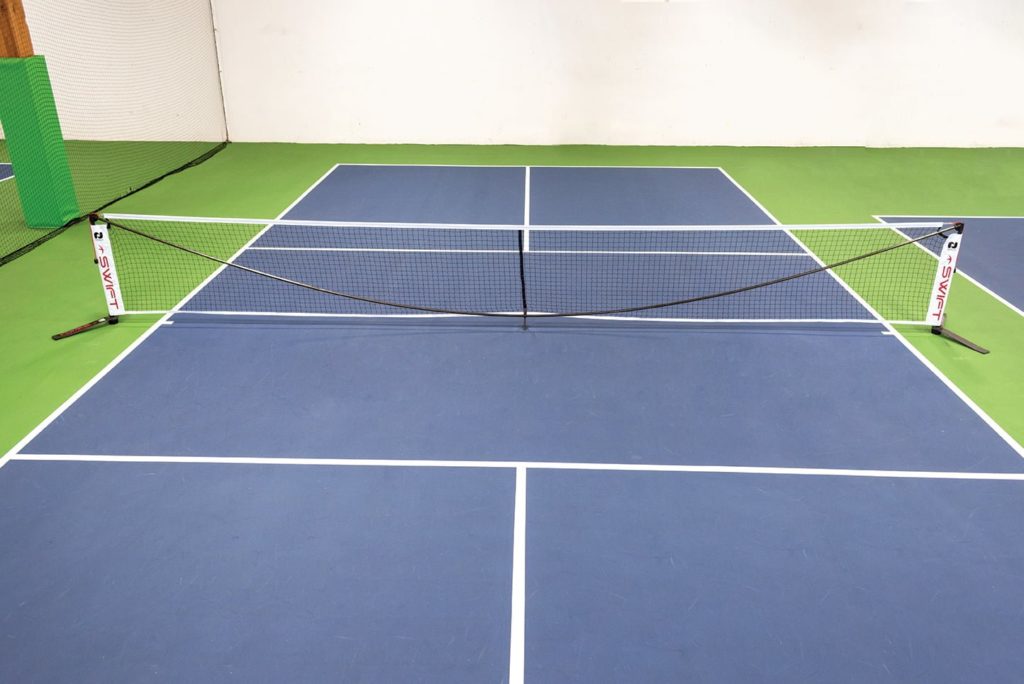Sustainable Practices in Pickleball Court Construction You Need To Know
As the popularity of pickleball continues to rise, so also does the demand for sustainable methods in court building. This approach not just addresses ecological problems yet likewise improves the longevity and capability of the courts. From picking environment-friendly materials to executing reliable drainage and energy-saving lights solutions, there are numerous methods to think about. The effect of these practices prolongs much beyond the court itself. Understanding just how each component adds to a much more lasting future invites even more expedition into the detailed balance in between entertainment development and ecological stewardship.
Choosing Eco-Friendly Materials
Picking environment-friendly materials is a crucial action in the building of sustainable pickleball courts. The choice of sustainable materials not only reduces environmental effect yet additionally boosts the long life and efficiency of the court. Secret products include recycled rubber for the surface area, which offers excellent longevity and shock absorption while drawing away waste from landfills.
Furthermore, using locally sourced materials reduces transport discharges and supports regional economic situations. Pickleball court construction. As an example, using native woods for fencing and seats can offer a sustainable visual while guaranteeing resilience versus the elements.
Including absorptive materials for court structures can even more add to sustainability by enabling natural water drain and reducing overflow. These selections not only shield local ecosystems however also promote much healthier play environments.
Efficient Water Drainage Solutions
While the selection of green materials is crucial, carrying out effective drainage solutions is similarly essential for maintaining sustainable pickleball courts. Proper drain not only shields the court surface from water damages yet also reduces disintegration and overflow, promoting ecological honesty.
Reliable drain systems can include permeable paving, which enables water to infiltrate the ground rather than pooling on the surface area. This minimizes the probability of standing water, which can lead to mold and various other maintenance issues. Furthermore, including strategically positioned water drainage networks and swales can direct excess water away from the court location, ensuring a completely dry playing surface area and stopping dirt disintegration.
Utilizing native plants in the landscaping around the courts can additionally boost water drainage by taking in excess water and lowering runoff. These plants call for less irrigation and advertise biodiversity, aligning with lasting methods.
Moreover, it is important to on a regular basis maintain the drainage system to guarantee its long-lasting performance. This includes cleaning particles and monitoring for blockages. By focusing on reliable drainage options, pickleball court builders can substantially add to the sustainability and longevity of the center, ultimately benefiting both players and the atmosphere.
Energy-Efficient Illumination Options
As the demand for pickleball remains to grow, integrating energy-efficient illumination options right into court style has actually come to be increasingly essential for sustainability. Standard lights systems often eat excessive energy, adding to higher operational expenses and ecological impact. Therefore, adopting contemporary, energy-efficient technologies is essential for both brand-new building and constructions and improvements.
LED (Light Emitting Diode) lights sticks out as a top option due to its long life and energy savings (Pickleball court construction). Contrasted to traditional lighting, LEDs make use of approximately 75% less energy and can last approximately 25 times longer, considerably minimizing upkeep costs. In addition, the directional nature of LED lighting decreases light contamination, ensuring that illumination is focused on the court rather than bordering locations.

Lasting Surface Alternatives
Discovering lasting surface choices for pickleball courts has obtained traction among building contractors and gamers alike. The emphasis on eco-friendly materials not just straightens with the expanding environmental understanding but additionally boosts the efficiency and sturdiness of the courts.
This product supplies outstanding shock absorption, reducing the risk of injuries for players while advertising sustainability. These tiles are very easy to set up and replace, and their flexibility permits for numerous court arrangements.
All-natural lawn courts are additionally becoming a lasting choice, promoting biodiversity and reducing the warm island effect. Nevertheless, they require normal upkeep and water, which might not align with all sustainability objectives.

Water Preservation Techniques

One more efficient method involves the setup of rain harvesting systems. These systems store and accumulate rainwater for usage in maintaining court surface areas and landscaping. This technique not just conserves safe and clean water but likewise lowers reliance on metropolitan resources.
In webpage addition, utilizing drought-resistant landscape design around the courts is vital. Indigenous plants call for much less water and are much better adapted to regional environment Source problems, hence decreasing total water usage. Additionally, utilizing effective irrigation systems, such as drip watering, makes certain that water is provided straight to plant roots, lessening evaporation and waste.
Verdict
Integrating sustainable methods in pickleball court construction considerably adds to environmental conservation and resource effectiveness. By prioritizing these methods, the building and construction of pickleball courts can align with more comprehensive environmental objectives while promoting long life and functionality within neighborhoods.
As the appeal of pickleball continues to increase, so as well does the requirement for lasting practices in court building.Selecting environmentally friendly materials is an important action in the building and construction of lasting pickleball courts. By prioritizing energy-efficient lights options, pickleball court fabricators can add to a much more lasting future while fulfilling the demands of stakeholders and gamers alike.Including sustainable surface options not just improves the performance of pickleball courts but also paves the way for carrying out effective water preservation methods.Including sustainable practices in pickleball court construction dramatically adds to ecological conservation and resource efficiency.